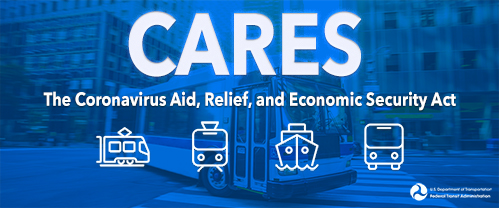
How the Coronavirus Aid, Relief, and Economic Security (CARES) Act affects your payroll
The CARES Act is federal legislation designed to offset the impact COVID-19 has had on the U.S. workforce and economy. It was signed into law on March 27, 2020. The new law infuses $2 trillion into the U.S. economy through a combination of federal relief loans, such as those available under the Paycheck Protection Program, unemployment benefits, tax credits, and other benefits.
The CARES Act has two important components for eligible employers: an Employee Retention Credit and a deferral of the employer share of 2020 Social Security taxes. If you continue to operate and pay employees during 2020, you may be eligible for one or both of these benefits. See below for more information.
How do these benefits interact with other CARES Act relief programs?
If you receive a loan under the Paycheck Protection Program, your ability to receive benefits through other components of the CARES act may be reduced or eliminated.
If you received a loan through the Paycheck Protection Program, whether or not any portion of that loan is forgiven, you’ll be unable to claim the Employee Retention Credit.
If you received loan forgiveness through the Paycheck Protection Program, you’ll be unable to defer the employer share of 2020 Social Security taxes for any deposits due after the date of the loan forgiveness.
If you have any taxes that were due to be deposited on or prior to the date of the loan forgiveness, you can continue to defer these tax payments until the applicable payment dates in 2021 and 2022.
What is the Employee Retention Credit?
Under the CARES Act, an eligible employer may be able to offset the impact of COVID-19 with an Employee Retention Credit. You must continue to pay employees during a COVID-19 related closure and carry on a business at some point during 2020 to be eligible for the credit, but all operations of a tax-exempt organization are treated as a trade or business under the statute.
A qualifying closure occurs during any calendar quarter of 2020 in which:
The operation of your trade or business is fully or partially suspended due to orders from an appropriate governmental authority limiting commerce, travel, or group meetings (for commercial, social, religious, or other purposes) due to COVID-19); or
Your gross receipts are less than 50% of your gross receipts for the corresponding quarter in 2019
This credit is not available to businesses that receive a loan under the Paycheck Protection Program.
Generally, if your business meets these requirements, you may be eligible to receive a tax credit that includes, but is not limited to:
A refundable tax credit for up to 50% of the total wages paid to employees during the closure.
The maximum you can receive is $10,000 of wages ($5,000 of credits) per employee.
What employees and wages can be included in computing the Employee Retention Credit?
The Employee Retention Credit is a refundable tax credit for up to 50% of qualified wages up to $10,000 of wages from March 13, 2020 to December 31, 2020. Meaning, you can take up to $5,000 in credits per eligible employee until the end of 2020.
Your workforce size
The wages an eligible employer can include depends on the average number of full-time employees it had during the calendar year 2019.
Average of more than 100 employees
If you had an average of more than 100 employees, you can claim any wages paid to employees who are not working due to the closure.
Average of more than 100 or fewer employees
If you had an average of 100 or fewer employees, you can claim any wages paid to an employee, working or not, during the closure.
Coordination with employer portion of health plan expenses
If your wages include the employer portion of group health care costs, you may include these expenses in the qualified wages. For the purposes of the credit, you may include this expense in the calculation of the qualified wages.
Coordination with other wage credits
If you received a credit from other wage credits, such as one’s found under the FFCRA, you may not include those paid leave credits as qualified wages in your totals for the Employee Retention Credit.
You can’t include wages for any employee’s wages from claims to Work Opportunity Tax Credit or other claims paid from the family and medical leave credit under Section 45S of the Internal Revenue Code.

